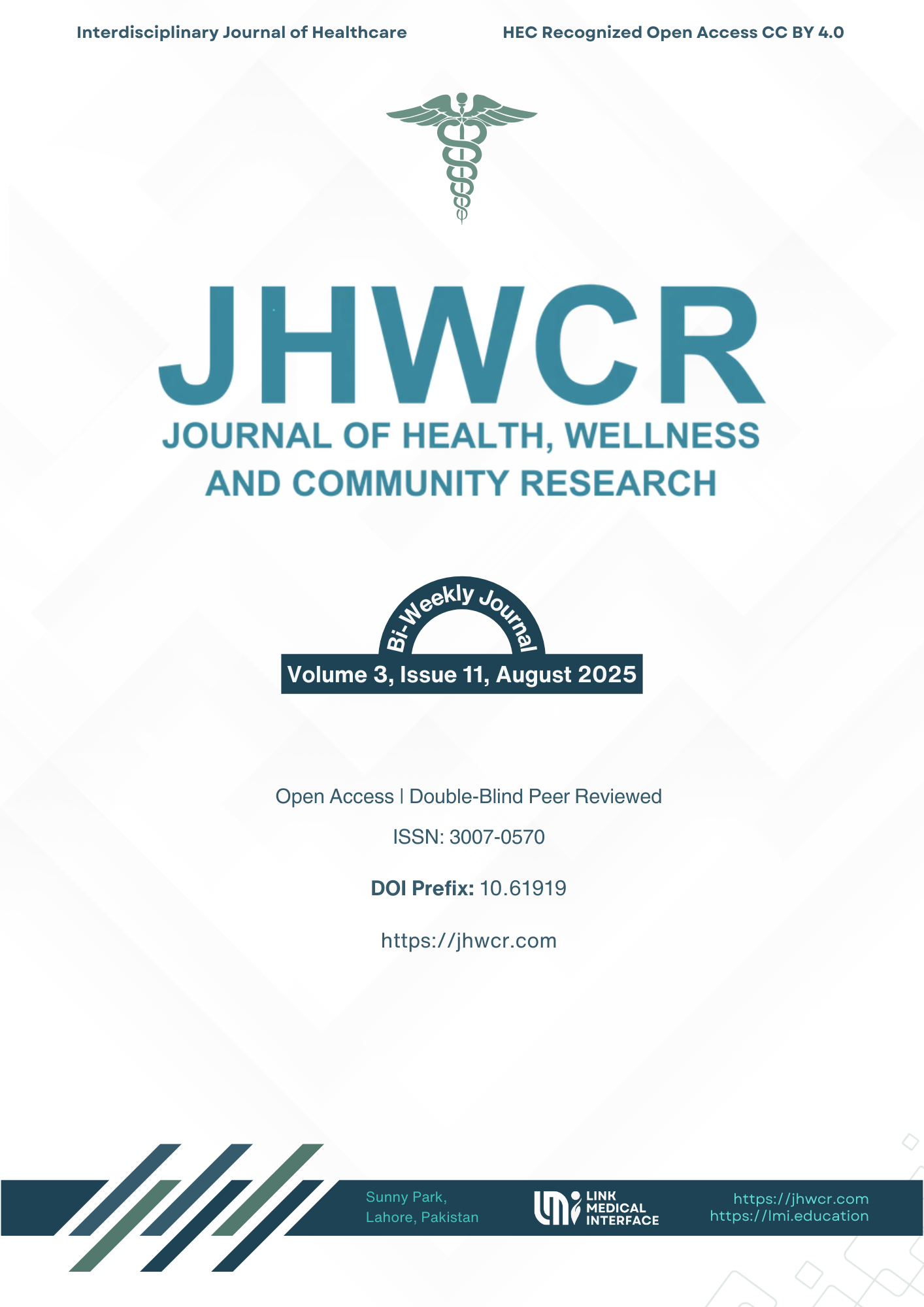Estimation of Chromium in Blood, Hair, and Nail of Workers of Leather Industry in Sialkot
DOI:
https://doi.org/10.61919/mwpg5352Keywords:
Chromium, Leather industry, Occupational exposure, Biomonitoring, Blood, Hair, Nails, Sialkot.Abstract
Background: Chromium is extensively used in the leather tanning industry, where occupational exposure is recognized as a major health hazard. Chronic absorption of chromium compounds, particularly hexavalent chromium, has been linked to respiratory disease, skin disorders, nephrotoxicity, hepatotoxicity, and carcinogenesis. Biological monitoring using blood, hair, and nail samples provides valuable insights into cumulative chromium exposure and its potential health effects. Objective: This study aimed to estimate chromium concentrations in blood, hair, and nail samples of leather industry workers in Sialkot, Pakistan, and compare them with non-exposed controls to assess occupational health risks. Methods: A cross-sectional study was conducted involving 40 tannery workers and 40 university students as controls. Biological samples were collected following standardized procedures, digested with nitric and hydrogen peroxide acids, and analyzed using Inductively Coupled Plasma Optical Emission Spectroscopy (ICP-OES). Demographic and health data were obtained through structured questionnaires. Statistical analyses included descriptive statistics and independent sample t-tests, with significance set at p≤0.05. Results: Chromium levels in workers were significantly elevated in blood (0.5833±0.515 µg/dl), hair (0.7472±1.377 µg/g), and nails (0.5972±1.373 µg/g) compared to controls (0.3600±0.230 µg/dl, 0.2018±0.113 µg/g, and 0.1618±0.121 µg/g, respectively; p<0.05). Workers reported higher rates of asthma, hypertension, skin allergies, and joint pain, correlating with chromium accumulation. Conclusion: The findings confirm that occupational exposure in the leather industry contributes to excessive chromium accumulation, posing significant risks to worker health. Routine biomonitoring and stringent protective measures are imperative to mitigate chromium-related morbidity.
Downloads
Published
Issue
Section
License
Copyright (c) 2025 Hanna Ehsan, Saima Ashraf, Muhammad Awais, Asad Shabbir, Manahal Sughra, Abida Shehzadi (Author)

This work is licensed under a Creative Commons Attribution 4.0 International License.


